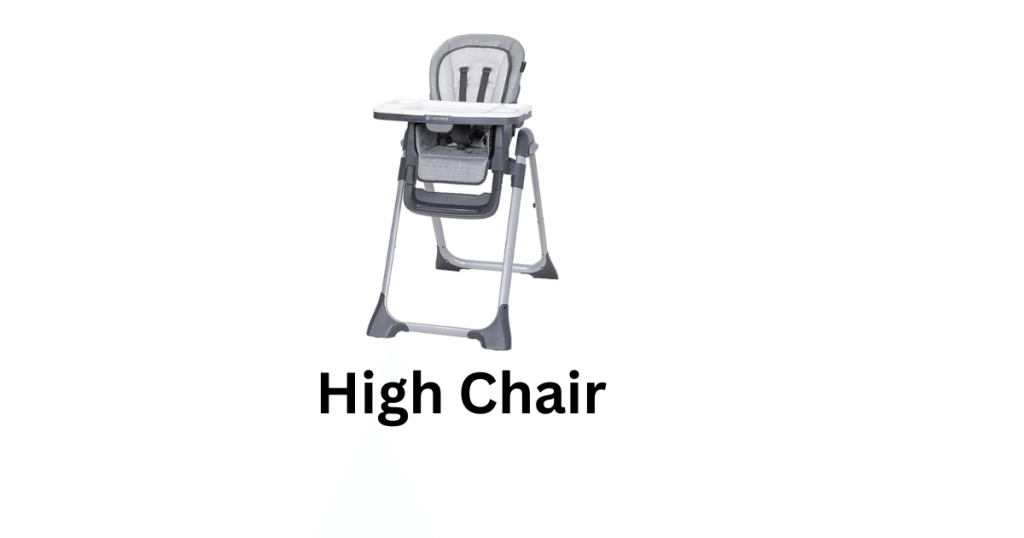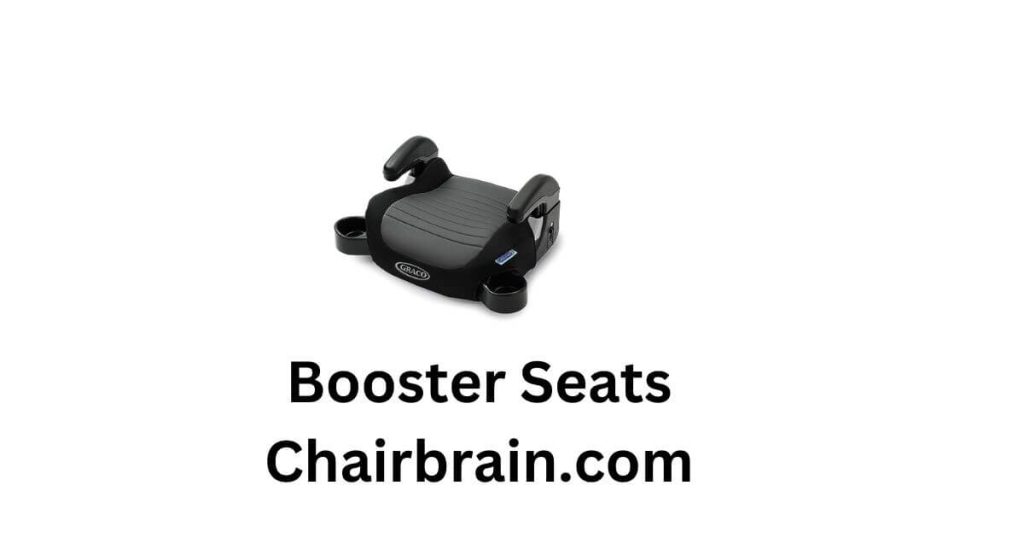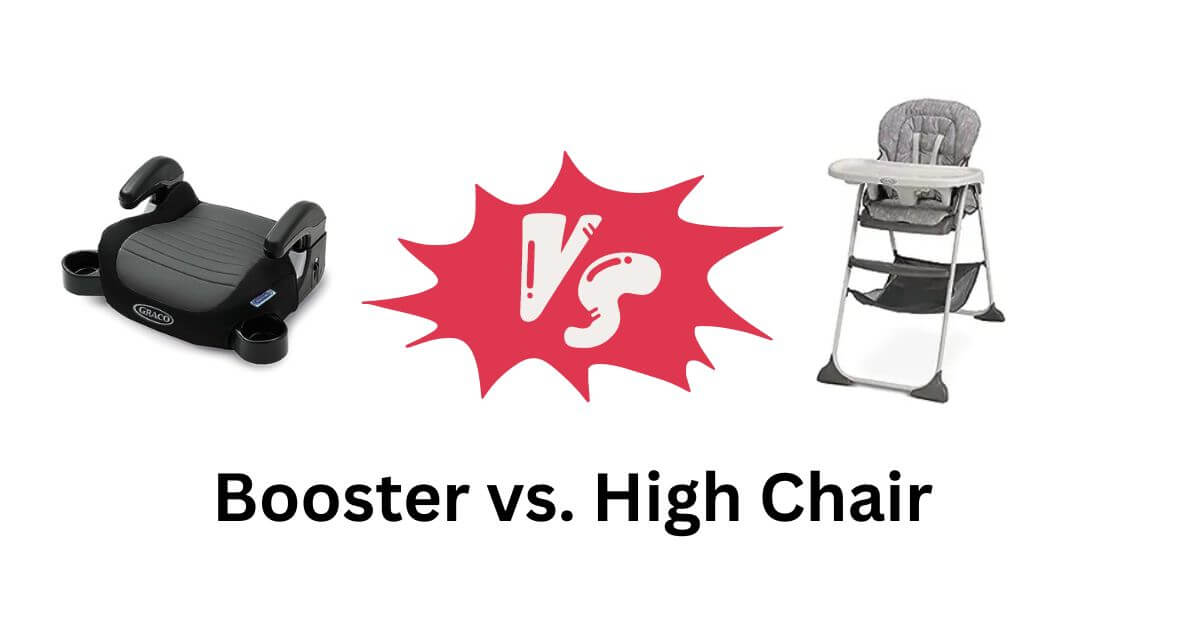Introduction: Booster Seat vs High Chair
As your child grows, providing them with a safe and comfortable seating option during mealtimes becomes essential. Especially when you and your other family members are having their meal at the dining table, then your toddler always wants to reach you. And that’s the most difficult situation!
So, it’s crucial to find the right seating option for your child so that he can join you at mealtime.
Two popular choices for seating children at the table are booster seats and high chairs. While both serve the purpose of elevating your child to the correct height, there are significant differences to consider when choosing between the two.
This detailed article will explore every bit of detail about booster seat vs high chair, empowering parents to make an informed decision based on their child’s needs and the family’s lifestyle.
Are you interested to dive into the details of booster seat vs high chair? If yes, then don’t take a break and rush towards the next section of this article!

1. High Chairs
High chairs are freestanding chairs specifically designed for infants and young toddlers who are just starting to eat solid foods. They typically feature a sturdy frame, a safety harness, and a tray for easy feeding. High chairs provide a secure and contain space for your child during mealtimes.
High chairs come with adjustable features such as height, reclining positions, and removable trays for easy cleaning. They often have a larger footprint and may include additional features like wheels for mobility or a storage basket underneath.
High chairs provide a safe and secure seating option for infants and young toddlers, ensuring that they are properly supported during mealtime. The containment and safety harness features reduce the risk of falls or accidents. High chairs also offer more stability compared to booster seats.
High chairs are generally bulkier and take up more space compared to booster seats. They may also be less portable, making them less suitable for families who frequently travel or have limited space. High chairs are most commonly used during the earlier stages of a child’s feeding journey.

2. Booster Seats
Booster seats are designed to elevate your child to the correct height so they can comfortably sit at the table with the rest of the family. They are typically lightweight, portable, and are placed on top of an existing dining chair. Booster seats are suitable for toddlers and older children who can sit up unassisted.
Booster seats come in various designs, including ones with straps that secure them to the dining chair, adjustable height options, and detachable trays. Some booster seats are also designed to be used with or without a dining chair, providing added convenience and flexibility.
Booster seats allow your child to join the family at the table, promoting social interaction and the development of good eating habits. They are portable, making them ideal for families on the go or those with limited space. Additionally, booster seats are often more cost-effective compared to high chairs.
While booster seats provide elevation, they may not offer the same level of support and containment as high chairs. They are best suited for older toddlers and children who can sit still and maintain proper posture during mealtime.
Key Differences Between a Booster Seat and a High Chair
As a general overview, high chairs are typically used for babies and toddlers who can’t sit up on their own yet. They’re designed to keep little ones safe and secure while they eat.
Booster seats, on the other hand, are designed for older kids who are too big for high chairs but still need a little extra height to sit at the table comfortably. They’re great for kids who are just transitioning from high chairs to regular chairs.
High chairs are usually made with a wide base to make them more stable, and they often have wheels or casters so you can move them around easily.
Booster seats, on the other hand, are usually more compact and portable, making them great for use at home or on the go. They’re also a great option for kids who want to sit at the table with the rest of the family but aren’t quite tall enough to reach the table on their own.
It was the general information about the difference between the seating chairs for the kids. Let’s make it more simple by highlighting the comparisons!
#1. Age and Development Stage
Booster seats are suitable for older toddlers and children who can sit unassisted, while high chairs are more appropriate for infants and young toddlers who are just starting to eat solid foods.
#2. Portability and Space
Booster seats are portable and can be easily moved or taken on the go, making them ideal for families who travel frequently. High chairs are generally bulkier and less portable, requiring more space in your home.
#3. Support and Containment
High chairs provide better support and containment, featuring safety harnesses and sturdy frames to prevent falls or accidents. Booster seats offer elevation but may not provide the same level of support.
#4. Long-Term Versatility
Booster seats can often be used for an extended period as your child grows, as they can be used with or without a dining chair. High chairs are typically used during the earlier stages of a child’s feeding journey and maybe outgrown more quickly.
Conclusion
Choosing between a booster seat vs high chair depends on your child’s age, development stage, and your family’s lifestyle. High chairs usually have a tray that attaches to the front of the seat, making it easy to feed your little one. They’re also designed to be adjustable, so you can raise or lower the seat as your child grows. Booster seats, on the other hand, are designed to be used with a regular chair. They usually have straps that attach to the chair to keep the booster seat in place, and they’re also adjustable so you can get the right height for your child.
By considering the differences outlined in this article and evaluating your child’s needs, you can confidently select the ideal seating option that ensures their safety and comfort during mealtimes.
